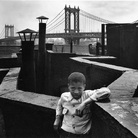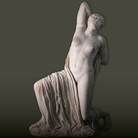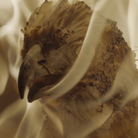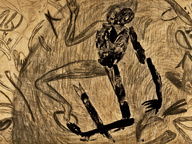Museums at The ‘Post-Digital’ Turn (I musei alla svolta ‘post-digital’) - Convegno

Museums at The ‘Post-Digital’ Turn (I musei alla svolta ‘post-digital’)
Dal 3 November 2017 al 4 November 2017
Torino
Luogo: OGR – Officine Grandi Riparazioni
Indirizzo: corso Castelfidardo 22
Curatori: Lorenzo Giusti, Nicola Ricciardi
Enti promotori:
- AMACI – Associazione dei Musei d’Arte Contemporanea Italiani
- Con il patrocinio della Rappresentanza in Italia della Commissione europea
- Ministero dei beni e delle attività culturali e del turismo
- ICOM Italia
- Regione Piemonte
- Comune di Torino
Costo del biglietto: Biglietto per le due giornate: € 150
AMACI – Associazione dei Musei d’Arte Contemporanea Italiani e OGR – Officine Grandi Riparazioni di Torino annunciano Museums at The ‘Post-Digital’ Turn (I musei alla svolta ‘post-digital’) il primo convegno ideato da AMACI nell’ambito di Museo Ventuno, una nuova piattaforma di ricerca dedicata alle trasformazioni dei musei d’arte contemporanea.
Il 3 e 4 novembre 2017, alle OGR di Torino, Museums at The ‘Post-Digital’ Turn si articolerà in sette diversi momenti di approfondimento con lecture e presentazioni di Claire Bishop (Professore, CUNY Graduate Center, NY), Cécile B. Evans (Artista), Lauren Cornell (Direttore del CCS Bard’s Graduate Program e Chief Curator all’Hessel Museum of Art, NY), Liam Gillick (Artista), Boris Groys (Filosofo e Critico d’Arte), Christiane Paul(Professore Associato, School of Media Studies, The New School; Curatore Aggiunto per Digital Art, Whitney Museum, NY) e Domenico Quaranta (Critico d’Arte, Professore e Curatore). Le sessioni di approfondimento saranno condotte da moderatori come Gabriella Belli (Direttore, Fondazione Musei Civici di Venezia), Carolyn Christov-Bakargiev (Direttore, Castello di Rivoli Museo d’Arte Contemporanea e GAM – Galleria Civica d’Arte Moderna e Contemporanea, Torino), Lorenzo Giusti (Direttore, Museo MAN, Nuoro), Letizia Ragaglia (Direttore, MUSEION, Bolzano), Nicola Ricciardi (Direttore Artistico, OGR, Torino) e Andrea Viliani (Direttore, Museo MADRE, Napoli).
Il convegno includerà anche una sessione scientifica coordinata da Gail Cochrane (Dottoressa, Politecnico di Torino, Dipartimento di Architettura e Design) e Pier Paolo Peruccio (Professore, Politecnico di Torino, Dipartimento di Architettura e Design), con panel e contributi di esperti provenienti da prestigiose Università e Istituti internazionali, quali Sara Abram (Coordinatore del settore conservazione arte contemporanea, Centro Conservazione e Restauro "La Venaria Reale", Scuola di specializzazione avanzata, Torino), Lily Diaz-Kommonen (Professore, Aalto University, Helsinki), Claudio Germak (Professore, Politecnico di Torino), Cecilia Hurley-Griener (Ricercatore e docente, École du Louvre, Parigi), Michael Grugl (Critico e Architetto, Rhode Island School of Design, Providence), Sanneke Stigter (Assistente Professore, Università di Amsterdam),Hélène Vassal (Capo delle collezioni, Centre Pompidou – Professore, École du Louvre, Parigi), Malene Vest Hansen (Professore Associato, Università di Copenhagen) e Victoria Walsh (Professore e Responsabile del programma Curating Contemporary Art, Royal College of Art, Londra).
Data la missione di AMACI – Associazione fondata nel 2003 con lo scopo di promuovere i linguaggi dell’arte contemporanea, di supportare lo sviluppo delle politiche istituzionali per il contemporaneo e di definire linee guida per una comune strategia culturale per i musei d'arte contemporanea – e la nuova e crescente necessità di analizzare le più recenti pratiche museali, Museums at the ‘Post-Digital’ Turn non intende interrogarsi su "cosa sta accadendo?" ma su una questione più urgente e durevole: "quali saranno gli scenari futuri?"
La rivoluzione tecnologica ha posto le istituzioni culturali di fronte a una sfida generazionale che le invita a riscrivere il proprio ruolo e ad aggiornare le proprie pratiche operative. Il convegno vuole affrontare un aspetto cruciale del nostro tempo, che ha portato a un cambiamento radicale nei modi di produrre e fruire le opere d'arte, mettendo il museo d'arte contemporanea di fronte alla necessità di una riflessione approfondita e trasversale. Nell’ultimo decennio le connessioni tra reti e la realtà digitale sono diventati elementi effettivi della vita quotidiana. Tali dimensioni sono state naturalizzate nel nostro modo di pensare l’esistenza, in una visione del mondo che ingloba la totalità del vivere contemporaneo, dal rapporto con gli oggetti alla strutturazione ramificata delle dinamiche sociali. L’arte e il suo sistema hanno recepito questo mutamento - la cosiddetta "svolta post-digitale" - avviando un processo di trasformazione sostanziale.
La condivisione in tempo reale di immagini e informazioni attraverso dispositivi digitali ha portato a unasempre maggiore radicalizzazione della pratica artistica, minando il concetto di unicità a favore di un principio di "interconnessione". Oggi, la visione "online" quasi sempre anticipa quella dal vero (anzi, a volte la sostituisce completamente), e un numero sempre maggiore di opere d’arte viene creato in modo specifico per essere fruito attraverso lo schermo. Le conseguenze di questo fenomeno di moltiplicazione e diffusione mettono in discussione le convenzioni espositive, le dinamiche della mediazione e i ritmi di produzione e legittimazione delle piattaforme tradizionali, a favore di processi più immediati. Il consenso, ottenibile molto più rapidamente che in passato, sembra essere sempre meno espressione di giudizi elaborati e sempre più un problema collettivo di visibilità, di sopravvivenza dell'immagine all'interno del web. Una sfera, quella online, che, in relazione alprocesso di progressiva integrazione tra spazio fisico e digitale, emerge sempre più come luogo materiale: non una zona virtuale, un'alternativa alla realtà, ma qualcosa di concreto che permea il nostro quotidiano. Non sorprende dunque che all’incursione dei network digitali nelle diverse fasi di produzione e fruizione dell’opera d’arte non stia corrispondendo una nuova fase del percorso di dematerializzazione avviato dalle neoavanguardie, bensì una reinterpretazione del pensiero realista e materialista – da parte di artisti, critici e curatori – in alternativa agli approcci postmodernisti e post-strutturalisti.
All’interno di questa cornice di riferimento, studiosi e esperti invitati da tutto il mondo si confronteranno attorno ad alcuni quesiti fondamentali:
cosa ha in serbo il futuro per il museo? che ruolo può giocare il museo come istituzione nello spazio fisico del web? quali cambiamenti sono in atto nelle pratiche curatoriali, nelle strategie espositive, nelle politiche di raccolta, collezionismo e conservazione, nelle tecniche di mediazione e nei sistemi di insegnamento? come è cambiata la relazione con il pubblico e quanto continuerà a cambiare negli anni a venire? quali risultati – in termini di consenso, incidenza, capacità persuasiva e critica dei progetti museali – è giusto aspettarsi da un sistema di fruizione e ratifica sempre più "esternalizzato"? quale ruolo potrà giocare la storia dell’arte negli anni a venire e in che modo dialogherà con l’azione sempre più fluida dei musei? Il convegno sarà ospitato all'interno delle OGR - Officine Grandi Riparazioni di Torino, nuovo centro di produzione culturale e di sperimentazione interdisciplinare di oltre 35.000 metri quadrati, che inaugurerà il 30 settembre 2017 grazie al sostegno fondamentale della Fondazione CRT. L'approfondita esplorazione dei vari ambiti di funzionamento del museo d'arte contemporanea è un tema fondamentale sia del convegno che del luogo che ospiterà l'evento. OGR è infatti il risultato dell'ambizione di riunire due anime, quella della ricerca artistica e quella dell'innovazione, mettendo assieme le idee e i valori della creatività con gli strumenti e i linguaggi delle nuove tecnologie all'interno di un suggestivo scenario architettonico post-industriale.
Il convegno si terrà in inglese, con la possibilità di traduzione simultanea in italiano.
Gli atti verranno pubblicati da Mousse Publishing in due lingue come parte del primo numero della collana dal titoloMuseo Ventuno – Museum Twenty One.
PROGRAMMA IN ALLEGATO
SCARICA IL COMUNICATO IN PDF
COMMENTI

-
 Dal 2 December 2025 al 19 February 2026
Milano | Centro Culturale di Milano
Dal 2 December 2025 al 19 February 2026
Milano | Centro Culturale di Milano
Walter Rosenblum. Il mondo e la tenerezza
-
 Dal 30 November 2025 al 12 April 2026
Gallarate | Museo MA*GA
Dal 30 November 2025 al 12 April 2026
Gallarate | Museo MA*GA
Kandinsky e l’Italia
-
 Dal 29 November 2025 al 12 April 2026
Roma | Musei Capitolini
Dal 29 November 2025 al 12 April 2026
Roma | Musei Capitolini
La Grecia a Roma
-
 Dal 22 November 2025 al 3 May 2026
Torino | Sale Chiablese dei Musei Reali
Dal 22 November 2025 al 3 May 2026
Torino | Sale Chiablese dei Musei Reali
Orazio Gentileschi. Un pittore in viaggio
-
 Dal 20 November 2025 al 25 January 2026
Firenze | Palazzo Strozzi
Dal 20 November 2025 al 25 January 2026
Firenze | Palazzo Strozzi
Andro Eradze. Bones of Tomorrow
-
 Dal 21 November 2025 al 28 March 2026
Cuneo | Complesso Monumentale di San Francesco
Dal 21 November 2025 al 28 March 2026
Cuneo | Complesso Monumentale di San Francesco
La Galleria Borghese. Da Raffaello a Bernini. Storia di una collezione


